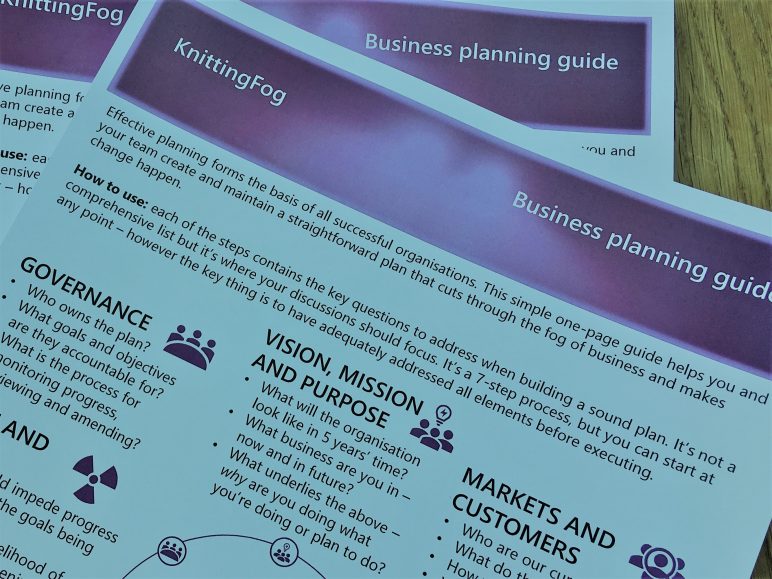Most organisations have a strategy, and many devote some of the best and smartest brains in the organisation to developing and implementing it. Almost all of this falls short in some way or other. So, is strategy failing to deliver?
 In their new book “Beyond Default: Setting Your Organization on a Trajectory to an Improved Future” change strategists David Trafford and Peter Boggis pinpoint what’s wrong with most business strategies: the failure to realise what trajectory you are on – and why – and where it’s taking you.
In their new book “Beyond Default: Setting Your Organization on a Trajectory to an Improved Future” change strategists David Trafford and Peter Boggis pinpoint what’s wrong with most business strategies: the failure to realise what trajectory you are on – and why – and where it’s taking you.
I had the pleasure of working with both David and Peter when we were all at CSC Index, the consultancy that gave birth to business reengineering, back in the 1990s.
I recently caught up with David and asked him some questions about the compelling and practical ideas the book contains.
NB: The idea of an organisation being on a trajectory is a compelling one, but I’ve not seen it articulated in this way before. Has anyone else defined strategy in a similar way before?
DT: Not that we’re aware of. The thinking emerged over many years of consulting to and advising companies and it really accelerated over the last eight years since we set up our own company (Formicio). We kept hearing language like “This organisation is hard-wired, it will never change” and CEOs would say the organisation won’t change or people tell me what they think I want to hear but nothing changes. And when you talked to non-execs they would say we need a change of direction – but the only lever they’ve got is to change the CEO. Companies were spending millions of pounds on transformation programmes, but they weren’t delivering. We figured something more fundamental must be going on.
As we thought about it we started to use the term “default future”, we were then approached by a publisher who had seen some of the ideas on our website and thought they would make a good book. When we suggested a title for it, which was too long and complicated, the publisher suggested it was really about taking organisations beyond their default, hence the title of the book.
Then we started to use the term trajectory rather than “path” and the more we worked on it, the clearer it became. In 2016 we concluded that our default future was that the book wouldn’t get finished if we just continued to talk about it. So we sat down to write it: once we’d articulated the default future it became easier to take action to change our own trajectory.
NB: The idea of a trajectory makes sense to me because anything you plan to do is a bit like shooting an arrow long distance, you have to set it off on a path and hope it gets somewhere near the target.
DT: When we launched the book an old colleague of mine – who’s an engineer by training – asked why we were using the term trajectory. He didn’t get it initially but then after a while he came back to me and said it’s like crossing a river – if you want to get to the other side, you have to take the current into account.
NB: The first half of the book makes for tough reading if you’ve spent part of your career working on strategy as it sounds like we’ve been wasting our time defining things that can’t be implemented! Is it the strategy that’s wrong – not taking account of those internal and external forces? Or just poor execution? Or are people just over-optimistic about the chances of success?
DT: All of these things: When CEOs think of the future, they think of the future they want to have, not the one that they’re going to get, so they falsely assume they can change the trajectory of the organisation and also that they’ve got more power to change it than they really have. So they say “We’re going to become X”, but don’t articulate X very well. Often there’s a small group involved in developing the strategy but that doesn’t mean everyone outside that group understands it. Very often strategy is poorly communicated or is based on false assumptions.
I’ve seen many strategies but often I just don’t get it. I find myself thinking, is it so sophisticated that a simple person like me doesn’t get it or is it just nonsense? I usually then ask: “help me to understand how by doing this you achieve that?” This simple question often triggers a rethink.
So, there are three things that are often wrong: 1) a false assumption that you can get the future you want, 2) it’s poorly articulated and 3) it’s poorly executed
NB: Particularly if it involves IT?
Absolutely! Take customer experience: it’s easy to say: “we’re going to give our customers a compelling digital experience”, but you have to consider your legacy infrastructure. It doesn’t mean to say you can’t start doing it but it’s more of a directional thing than an end state – you need to be cognisant of the limitations. A number of digital transformations have started but then failed. People underestimate the money and effort required to re-platform.
NB: And often the solution is just to put more and more effort into building that platform…
DT: It’s a false assumption that organisations are capable of delivering digital. One Insurance CEO we spoke to realised that their IT capabilities were wrong so went externally (to Silicon Roundabout – London’s digital agency hub) and brought it in. Another CEO in a different sector bought a pureplay digital company – then had the challenge not to destroy its successful culture.
NB: Is there an optimum size or shape where it’s easier to articulate the default and desired futures? Some businesses are complicated so there will be lots of different trajectories?
DT: It’s a combination of size, complexity and legacy thinking. The optimum size is where it’s perceivable by the CEO – i.e. it can be retained it in the head all at the same time. For example, a mobile digital bank is fairly straightforward, but for a global bank with many lines of business in different geographies, you can’t easily do that. The divisions can but then the challenge is to align the different trajectories.
What I see is the CEO delegating accountability to the divisions and this translates into individual strategies but with no overarching trajectory or synergies. So, a new group CEO can say the focus is on delivering end to end digital CX, but legacy thinking leads to doing things in the same way. When the overarching strategic intent is translated into the divisions, something gets lost along the way, for example, how does the US division align with international? Executives do different things according to their accountabilities and incentives. Silo organisations are, in themselves, a powerful navigating force that keeps the organisation on a certain trajectory.
NB: Silos will always exist though and – as articulated in your book and through our own experience – operating principles can be a powerful tool to help link across the silos.
Absolutely right – operating principles are a powerful way of making strategy meaningful to those people who were not engaged in developing the strategy. When we articulate principles we’re effectively saying do it this way not that way – a principle always implies a conscious choice.
Many organisations confuse principles and policies – but if you articulate principles there are implications, and this is what needs to be managed. You can’t just declare them, you have to manage the implications (which in turn will shape your policies and procedures).
You can then translate operating principles into design principles for different facets of the organisation, for example IT systems, processes and organisational structure. These in turn will have implications that need to be managed. It requires joined-up thinking, which actually is quite rare.
NB: So you’re making conscious choices about the culture you want to create – but I didn’t spot the word ‘culture’ anywhere in the book. Was this a conscious choice?
DT: Yes, we intended deliberately not to use it and chose instead to focus on ‘organisational capabilities’. In addition, I don’t think you’ll spot the word vision in there either – or mission.
NB: These are all terms that are well-used, and that people understand, but I’ve started to use “purpose” as this has a greater simplicity. This also connects to your personal purpose as you state at the end of the book.
I like the example of purpose. We didn’t use the language of vision or mission as they are based on a false assumption: it assumes we live in a static world. And it assumes that we can define a change programme to take us to our vision. But we live in a volatile and uncertain world, and by the time you get to your vision, you find you need to be somewhere else because the context has changed.
What we say in the book is that the future exists but it’s not evenly distributed. You have to be cognisant of the exogenous navigating forces that are continually changing your context and the strategic trajectories you could pursue.
NB: You did pick up on one well-used term: Operating Model – but in my experience it’s used differently and less powerfully that you intend.
You’re absolutely right: it’s a powerful idea that has been hijacked and corrupted. It has to be consciously designed and it’s multifaceted (processes, IT, organisation, roles and culture). Very often it looks like the organisation has been designed by accident!
NB: The other powerful idea is that of a “strategic signature” which I would simplify as “taking all the things that we’re doing and varying them”
DT: About three years ago we were working with company and the CEO and Board were having difficulty becoming aligned around the strategy. We helped them identified their different strategic axes – which represent their sources of value – and then facilitated a process where they decided if they were going to introduce new strategic axes or drop some existing ones. They then decided where they where are you going to operate on each strategic axis.
And the resulting “signature” is unique, even between different players in the same industry, and when you identify current and future signatures this leads to a meaningful conversation about where you can “increase the volume” on some axes and turn it down on others. It’s a very simple tool that creates a meaningful dialogue and alignment of understanding.
NB: Can you cite organisations that have embraced this approach wholeheartedly?
It’s difficult to find one that’s done everything in the book and also some of our client examples are confidential, so we can’t quote them directly. What we’ve done is to cite organisations that are in the public domain who show evidence of doing, or have done, what we’re talking about – even if they don’t know it.
For example, that’s why we used Blockbuster, it’s well cited by anyone who can remember them. Nokia also follows the thinking exactly. And with GE, we talk about their strategic focus shifting to industrial products and the industrial internet and moving away from financial services. However, the cost of changing their trajectory is proving to be higher than they would have liked due to liabilities they retained when the divested their insurance businesses.
NB: What’s your advice to someone who’s not a CEO – how can they get started?
DT: Start by using the language. I’ll give you an example: my son, who works in a large multinational organisation has been using the language of default future for some time and about a year ago he was in a meeting with his boss’s boss and other some senior people when his boss’s boss started to use the terms default future and trajectory to describe their strategy. It’s now becoming more commonly used across the organisation. More recently he’s introduced the language of operating principles, so I would say just start using those ideas in conversations in your business.
More information on David and Peter’s book Beyond Default can be found at www.beyond-default.com










 In their new book “
In their new book “